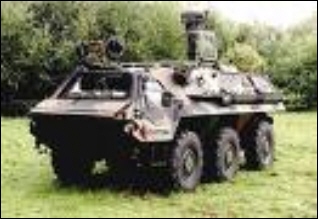Tactics 101 034 – Utilizing Defense Assets
UTILIZING ALL YOUR ASSETS IN THE DEFENSE
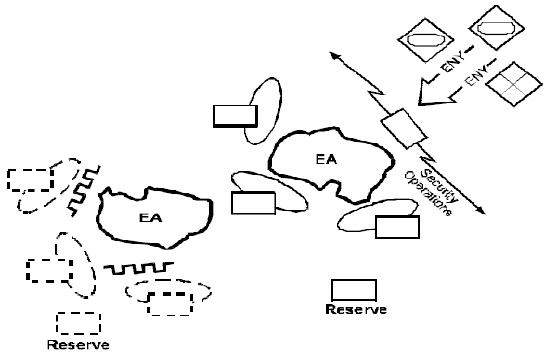
“The person who is able to fully utilize the equipment of military engineering and show a flexibility of mind and military inventiveness is always able to confront the enemy with unexpected events and unexpected dimensions of the defeat dealt it." – Marshal of the Soviet Union Mikhail Tukhachevsky

LAST MONTH
In our most recent article, we provided ‘A Way’ to plan for obstacles in your defense. As you saw, the task of developing an obstacle plan is a challenging task. It is part science, part art and a takes a great deal of thought and insight. It is critical you understand obstacle planning is about prioritizing what you need and knowing the capabilities of all your assets. You will not be able to construct every obstacle you desire. However, you will be able to create the necessary obstacles you need to facilitate your defense with proper planning and preparation.
THIS MONTH
One of the major points we have stressed throughout the series is that all Commanders have a finite amount of resources to fight with. This is particularly true when the Commander is executing a defense. A Commander may have the benefit of having some extra preparation time (never enough!). However, it is almost inevitable the attacker will possess a decided advantage in forces available (normally a 3-1 advantage). Thus, it is critical the Commander utilize every asset he has available to its’ utmost.
In this month’s article, we will provide you some ‘nuggets’ and how to best use all your assets in the defense. We will provide you the proverbial laundry list of things you may want to think about. Hopefully, these will be valuable when you plan and execute your next defense. We will focus in the areas of: 1) Intelligence 2) Maneuver 3) Fire Support 4) Mobility/Counter-Mobility/Survivability 5) Air Defense 6) Combat Support 7) Command and Control
Intelligence

A Scout Gathering Key Information
- The counter-reconnaissance fight prior to the enemy’s attack has a huge impact on determining the final outcome. If you allow enemy recon to move with relative impunity throughout your defense; it will not be pretty. This fight within the fight provides the winner with a marked advantage in the future.
- The counter-reconnaissance fight for the defender is all about hunting and killing. The hunting can be accomplished through a variety of means. You get trusted eyes (human or technological) on his recon elements. With eyes on the target; you can now move to the killing phase. Killing can be done by direct fire or indirect fire. The advantage of indirect fire is it does give away positions. However, your indirect fire systems must be highly responsive. Recon vehicles are fleeting targets and you must act upon them immediately.
- Your intelligence/recon plan should (must) change during the preparation phase of the defense. As new information comes in and it is analyzed; new requirements should be generated. Do not make the huge mistake of collecting information that is no longer relevant to your plan. This only ties up your assets and will soon leave you in the blind.
- Besides blinding the eyes of your opponent’s reconnaissance; there are several significant pieces of information (many fairly obvious) you want your intelligence assets to collect and then analyze. These include:
- Where is the enemy? What is his strength? What is composition? What equipment doe he possess?
- What are his recon goals? This will assist you in determining his intentions.
- Where are his fire support assets located (and types)?
- Where are his breaching assets located (and types)?
- Any weaknesses found – gaps, assailable flanks etc… ?
- Where are the civilian populace and their intentions?
- Location of command posts, radar systems and other key vehicles.
- Analyze the terrain. Look for terrain that will support future friendly movement (counterattacks, future offensive operations).
- Ensure you have developed a plan to logistical support your recon assets. Out of space, out of mind is not the right answer. Resupplying and casualty evacuation is tough business in regards to recon forces.
- You do not always have to have your scouts pull all your recon missions. Sometimes it is wise to pull them in, give them a break, and let a maneuver unit perform the mission.
- Reconnaissance is an interesting business. It is long periods of inactivity and then out of the blue comes the action you need to answer the key question regarding the enemy. You must be ready when that time comes.
- In the recon/intelligence business sometimes the lack of any activity in an area provides just as much information as activity does.
Maneuver
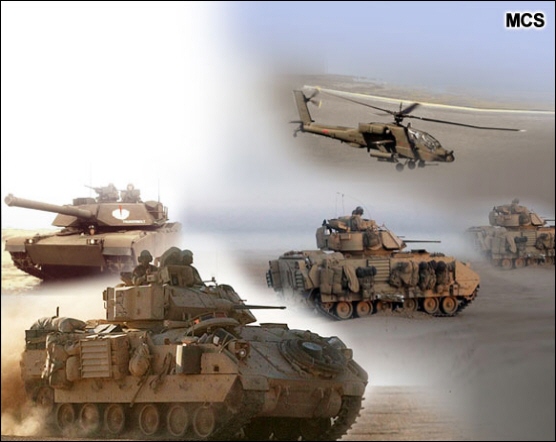
Maneuver Assets Which Make Life a Little Easier!
- Even though your maneuver assets may be limited, you must stand-up a reserve. A commander must have an asset he can utilize to personally influence the fight. As we discussed before, you should use your reserve to reinforce success or to deny your enemy success.
- Potential missions for the reserve in the defense are: 1) Stop an enemy penetration of your main defensive area 2) Provide your counterattack force the boost it needs if its’ attack becomes bogged down 3) Provide the initiative to transition to the offense if the window of opportunity presents itself.
- Make sure you position your reserve where he can maneuver to the locations you may utilize him in a timely manner. Additionally, the reserve must rehearse these potential missions.
- With that in mind, the Commander must know how long it will take the reserve to maneuver to the locations where he will potentially use them. In regards to time, know how long it will take at night, during the day, limited visibility, buttoned up etc….
- A Commander will probably make 3-4 key decisions during the actual conduct of the defense (he better make some decisions!). These can include:
- Utilization of the reserve
- Initiation of a striking force (if you are employing a mobile defense)
- Adjustment to defensive plan
- The initiation of any coordinated deep attacks
- Execution of emplacing a scatterable minefield
- And, unfortunately, initiating retrograde if the tactical situation presents itself
- Do not tip your hand too quickly on the defense. Try not to occupy your final defensive positions until the last feasible time. Good units will occupy hide positions and then move into their main defensive positions during limited visibility.
- Rehearse the plan. A good defensive rehearsal should include:
- The counter-recon fight
- The passage of lines of your recon elements as they fall back
- Any deep attack
- The main battle area engagement (Discuss the what-ifs-good and bad)
- The use of the reserve
- The logistics plan to support the operation throughout
- Utilize dismounted infantry to shape the battle field. They can make it extremely painful for your enemy to enter certain terrain (chokepoints, valleys, etc…). This in turn forces them to maneuver into ground they do not want to go into.
- Do not allow the enemy to come into your main defensive area unscathed physically and mentally. You must ensure you provide him events that disrupt his decision cycle. This will lead to disruption in his tempo and afford you the opportunities to defeat him.
- Remember the old adage. “If you defend everywhere; you defend nowhere.” The defense is all about massing effects and combat power. “Penny pocket” mentality in the defense leads to a quick thrashing.
- Your aviation assets can be a tremendous asset in the defense. However, do not place your entire plan on their success. Poor weather can seriously alter the timeline of rotary wing air. They may not be there when you need them.
- You must have flexibility in your plan. We all know our opponent is not going to do exactly what we anticipate. As he maneuvers into your engagement area start taking away his options. This is done through indirect fire, obstacles, and some well-placed direct fire. Get him to mentally prescribe to the plan you want him to execute.
- Never stop preparing your defense. Make use of every single minute. If you anticipate the enemy to attack at a certain time and it does not happen – KEEP DIGGING!
Fire Support
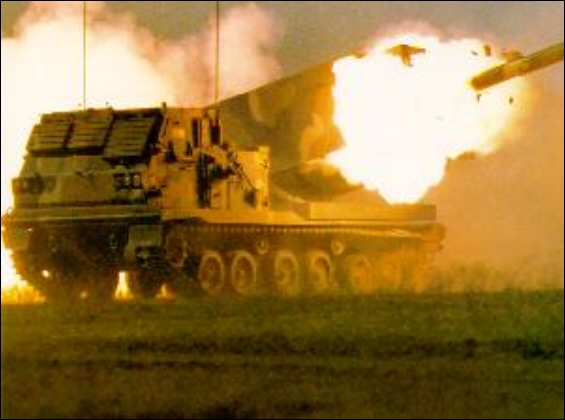
No Better Feeling than Seeing a Multiple Launch Rocket System Deliver its Wares!
- A defensive fire plan must cover all phases of the defense. This includes the initial reconnaissance fight, the primary defensive fight, the rear area, and all the contingencies (good and bad).
- Utilize all your fire support assets. This includes close air support and air interdiction (if available), field artillery, and mortars.
- Understand the capabilities and limitations of your resources. Play off each of them.
- Do not put all your eggs in one basket. As in most areas, plan on redundant means to achieve your objectives.
- Always remember that your internal assets are the most responsive. Do not totally depend on an external asset to achieve your critical tasks. They may not be available when you truly need them.
- Weight your main effort with more fire support. If they are your main effort, they likely have your unit’s most important purpose to accomplish.
- Everyone must understand the triggers to initiate vital fire support targets. If you execute too early or too late; you have set the conditions for your own defeat. Triggers are marked by target reference points.
- Target reference points must be seen by your forces. They must be able to be seen in the day, night, poor visibility etc…. There are various kinds of creative ways to make them visible.
- You must know the restrictions that have been placed on you by your higher headquarters. These may be no fire areas, restricted fire areas, coordinated fire lines, restrictions on types of munitions you can use, etc …. These restrictions will do exactly that – restrict your options.
- You must have redundant eyes on key targets. Do not have one set of eyes on a vital target. If that set of eyes is not working, that key target may never get initiated.
- You must have a plan to move your artillery and mortar assets during the fight. This movement must be staggered so you have support at all times. If you move entire units at once, your indirect fire support is not there when you need it. Conversely, if you never move them you are setting the conditions for counter-battery fire to take these assets out.
- As in all types of actions, you must rehearse your fire plan. Rehearsals take away much of the uncertainty and build confidence.
Mobility/Counter-Mobility/Survivability
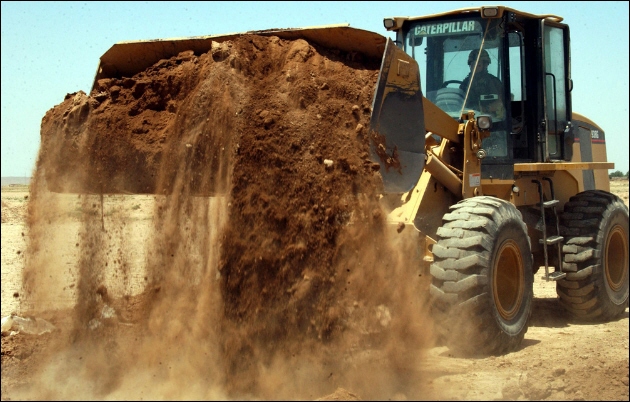
Initiating the Obstacle Plan
- As we previously discussed in great detail, the construction of any obstacle involves a significant cost in resources (personnel, supplies, equipment, TIME!). Because of this, ensure any obstacle constructed has a distinct purpose and is covered by fire (direct or indirect). If it does not comply with the above, you are not utilizing your resources properly.
- Do not forget to utilize your engineer assets in the mobility role. You should attach mobility assets with your reserve and any striking force you have in the defense. Your opponent will focus some of his intelligence effort to finding these units. If found, he will expend resources in limiting their maneuver options. You will be thankful you positioned these assets there when the time comes.
- During the defense, you will also need engineer assets to ensure mobility on routes (particularly supply routes). As you see, everyone wants the engineers. You must prioritize!
- You must have a system in place to track where your engineer assets are at all times during defensive preparation. There are so many horror stories out there of engineer assets sitting idly. This happens primarily because no one has taken positive control of them.
- You must understand the obstacle plans of your sister units. What they have done (or haven’t done) will influence enemy maneuver into your defensive area.
- Related to the above, your sister unit’s obstacle plan can also influence your own future maneuver. This can include any potential counterattack operations and transition into the offense.
- Prioritizing your construction of survivability positions is nearly as important as prioritizing your obstacles for construction. One again, you have strict limitations on time and resources. It is almost inevitable you will not be able to ‘dig-in’ all your vehicles in the defense. Thus, you must have prioritization plan. Vehicles such as counter-fire radars, air defense elements, command and control vehicles, and critical one of kind type vehicles must have priority. From there dig-in primary positions for your all your direct and indirect fire systems. It is probably wishful thinking that you will have the resources to also dig secondary positions for these vehicles.
- Obstacles must be sighted before emplaced. That means friendly forces can see them and can thus, produce direct and indirect upon them.
- Survivability (sandbags, overhead cover, etc…) and counter-mobility materials (mines, wire, etc…) must be brought forward ASAP. They must also be positioned where they are required.
- Make sure you close the lanes any lanes you have made for friendly movement through your obstacles when the time is necessary. Seems like a no-brainer, but the stories we can tell!
- If you utilize scatterable mines; you must let the entire unit know where they were displaced and what their time duration is before they detonate. No surprises here!
Air Defense
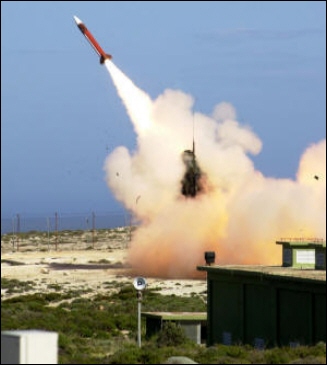
Air Defense in Action
- Do not make air defense in the defense an afterthought! Even if you possess air supremacy on your battlefield; enemy air can make life unpleasant. It only takes one enemy aircraft to get into your main defensive area to throw your entire plan into chaos.
- With that said, there are several assets you will want to ensure possess excellent air defense protection. These include:
- Command and Control Nodes (These typically put out big electronic signatures which a smart enemy is looking for).
- Your main effort (the enemy will expend resources to try to identify)
- Fire Support Radars
- Logistic areas (particularly in the rear area)
- Your reserve (again, the enemy will attempt to identify)
- Place air defense assets along any chokepoints you may want to maneuver through. A smart enemy will try to take away your options with a surgical air strike.
- Cover bridges you may want to utilize later with air defense. Again, your enemy will try to take out bridges he feels you want to use with air strikes.
- Cover your supply routes with air defense coverage. Nothing makes a pilot more giddy than seeing a convoy of supply vehicles moving hi-diddle- diddle- up- the- middle. It is a very lucrative target.
- Ensure you provide your air defense assets (particularly radar systems) proper security and survivability. Do not allow an enemy dismounted patrol to take out your air defense.
- Ensure you protect your caches of air defense ammunition. Depending on the weapons platform, a basic load can go very quickly and resupply is needed. It’s obviously not good when an enemy field artillery round takes out your air defense ammo!
- Do not make it easy for enemy air. Dispersion of vehicles is critical. This is especially true in the preparation phase of the defense. Clusters of vehicles are lucrative targets. One stray airplane can cause plenty of damage.
Nuclear/Biological/Chemical (NBC)
FOX Nuclear Biological Chemical Reconnaissance Vehicle
- Based on your IPB (Intelligence Preparation of the Battlefield), you must position your NBC detection equipment in the areas where you anticipate the enemy will use them.
- There are several candidates your enemy may want to ‘slime’ (contaminate). These include your reserve location, key command posts, and logistical areas. With that the case, you should locate not only detection equipment there, but have a plan in place for hasty and deliberate decontamination.
- The vast majority of NBC centric vehicles are of minimum quantity in a unit. In fact, they are normally provided to the unit for a specific time and mission by the higher headquarters. Consequently, these are very critical assets in a unit. Since they are critical and possess little in the way of internal security; you must assign them some forces for security. Again, you do not want an enemy patrol sneaking up on these vehicles and taking these important assets out.
- Ensure you have a plan to dig these vehicles in during the defense. Do not make it easy for your enemy to fire a stray artillery shell and destroy the asset.
- It is a good idea to augment your reserve with NBC reconnaissance support. Once you deploy the reserve and order their movement, you will want this support maneuvering with them.
- Provide your NBC assets clear priorities. If an event does occur, they must have direction.
- Intelligent use of smoke in the defense is truly a combat multiplier. Unfortunately, many times the intelligent piece is left out of the equation. The haphazard use of smoke on the battlefield will adversely affect you more than your foe. The use of smoke is certainly art and science. Because of this challenge, we will spend a future article dedicated on the subject. In the meantime, here are a few things you should consider using smoke in the defense:
- Conceal the maneuver of key forces (reserve, striking force, etc…)
- Slow or disrupt enemy maneuver
- Isolate enemy units
- If used effectively can silhouette vehicles making them much easier targets
- Disrupt enemy command and control forcing vehicles to mass prematurely.
Combat Support
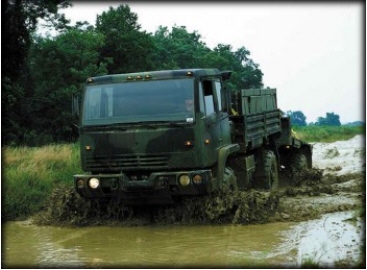
Getting it where you need it.
- The defense is all about preparation and preparation is logistically focused. Planning must be proactive and not reactive. The wheels (literally) must be in place well before the occupation of the defense. It takes time for supplies and materials to get forward. If you start too late; you will never be able to make this time up!
- It is critical you plan primary and alternate Main Supply Routes (MSRs) throughout your defensive area (from the rear area to your recon assets). These routes are utilized specifically for logistical traffic. These routes must be deconflicted with the maneuver plan and obstacle plans. If not, chaos ensues!
- Ensure you have a plan for security of these MSRs. This includes mounted patrols and aerial patrolling (if available). These forces should be equipped to deal with smaller enemy forces. If the enemy is substantially bigger, you should have larger maneuver forces prepared to deal with the threat.
- You should pre-stock ammunition forward in the main battle positions. This includes tank rounds, TOW rounds, larger caliber machine gun rounds, and artillery rounds. Better safe than sorry! Use historical data for usage.
- A well-planned and rehearsed casualty evacuation plan is a necessity. Every minute is critical and a Soldiers’ life is at stake. Evac plans must include ground and air assets. Do not tie-up air evac for routine casualties (not that these are not important!). Keep air for your priority casualties.
- As in the above, a well-planned and rehearsed vehicle evacuation plan is a necessity. Do not wait to the end of a battle before evacuating battle damaged vehicles. If the tactical situation warrants it, begin evacuation of these vehicles immediately. A good unit can repair vehicles (forward) and get them back into the fight! This is combat power!
- The defensive fight can last a long time. You must continually resupply your units. There is no sadder event when you have the opportunity to transition to the offense and you can’t because you are incapable logistically.
Command and Control

The Infamous Antennae Farm.
- Tracking the preparation of the defensive area is leadership business. Leaders must circulate around the battlefield during preparation to ensure quality preparation. Soldiers also like to see their leadership while they are busting their butts! A couple words of encouragement and the offer of a hot or cold drink are great for motivation.
- The Commander’s location during the fight is critical. You cannot depend on technology to provide you the picture of the fight. A Commander must have all his senses exposed to the fight to make the 3-4 key decisions that will come up during the fight. A Commander who sits in his distant command post will not utilize all his senses.
- So where should the Commander position himself during the fight? The best place is where he can personally gather the information he needs to make his most critical decision. Once again, he must have all his senses involved so he can make the right decision at the right time.
- You cannot position your command and control nodes in obvious locations. Your enemy is not dumb. If you place them in typical locations they will target them with deep patrols, artillery, or chemicals.
- During the preparation of the defense (this can extend for a few days), it is wise to move your command posts frequently. A smart enemy will find your command posts and will wait until the initiation of his attack before he attacks it. This just adds more confusion at a critical time.
- With that said, ensure you have internal and external security for your command posts. Give your maneuver units be-prepared missions to assist in defeating any attacks of the command posts. Key in this is ensuring these units have rehearsed the routes and know the locations of the command posts. It is not a good day when you need the support of an armor platoon and they cannot get to the command post quickly!
- As we discussed earlier in the intelligence section; your information requirements must change during the preparation and execution phase of the defense. This is also the case with the information the Commander needs to make his key decisions (CCIR). If the Commander’s CCIR stays the same throughout the operation; the end result will likely not be good. The good Commander should review his CCIR at various times during the operation.
- Make sure you know what is happening on the flanks. Success or failure with an adjacent unit will impact you. In fact, the smart enemy will attempt to maneuver on boundaries! This almost always leads to a little chaos on has responsibility.
- Depending on the size of the unit and your resources available, you may want to develop a deception plan. As we have discussed before, if you going to do it – do it right! A feasible deception plan consumes significant resources. You cannot simply go through the motions. If you do; you will only deceive yourself. (We will dedicate a later article on deception).
REVIEW
As in many things in life, you have to make the most with what you have! This is certainly the case for the commander who is conducting a defense. Leave out an asset in a fight and it is the difference between winning and losing. We hope this article has provided you some ideas and actions you can use on your battlefield. Defending is a tough mission. Defending while not using every resource at your disposal makes it almost an impossible mission.
NEXT MONTH
One operation that tends to be overlooked until it is far too late is retrograde. Perhaps, it is because it is many times the climax to a defeat. In any case, it is an operation that is rarely trained for or discussed for that matter. In our next article, we will begin dissecting retrograde operations. We will begin by discussing the withdrawal. In future months, we will analyze the delay and the retirement.


